Episode 74 Show Notes
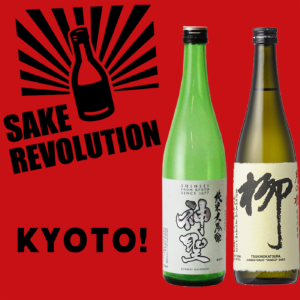 Episode 74. Kyoto is one of Japan’s most well known tourist destinations. If you think of Kyoto, you’ll probably envision geishas, green tea and gardens. But did you know, this city was not only the capital of Japan for over 1,000 years but it has also been key player in sake culture and history for centuries? This week John and Timothy travel virtually to Kyoto and discuss some of it’s history and stories of their past visits to this amazing sake center. We’ll learn about their shared favorite sake bar, and some of the sights both on and off the beaten track that are worth seeing. Kyoto’s sake heartbeat is concentrated in the Fushimi neighborhood, south of Kyoto’s main train station, where you’ll find a cluster of well-known and centuries-old breweries. The breweries whose sake we taste in today’s episode were both founded in the 1670s! While we still can’t visit in person right now, we can pour, sip and discuss a bit of Kyoto’s sake heritage together.
Episode 74. Kyoto is one of Japan’s most well known tourist destinations. If you think of Kyoto, you’ll probably envision geishas, green tea and gardens. But did you know, this city was not only the capital of Japan for over 1,000 years but it has also been key player in sake culture and history for centuries? This week John and Timothy travel virtually to Kyoto and discuss some of it’s history and stories of their past visits to this amazing sake center. We’ll learn about their shared favorite sake bar, and some of the sights both on and off the beaten track that are worth seeing. Kyoto’s sake heartbeat is concentrated in the Fushimi neighborhood, south of Kyoto’s main train station, where you’ll find a cluster of well-known and centuries-old breweries. The breweries whose sake we taste in today’s episode were both founded in the 1670s! While we still can’t visit in person right now, we can pour, sip and discuss a bit of Kyoto’s sake heritage together.
Skip to: 00:19 Hosts Welcome and Introduction
Welcome to the show from John and Timothy
Skip to: 02:20 Sake Spotlight: Kyoto
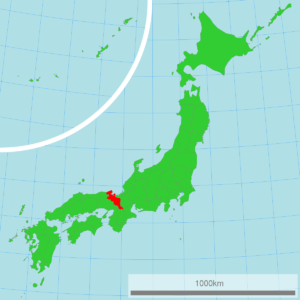
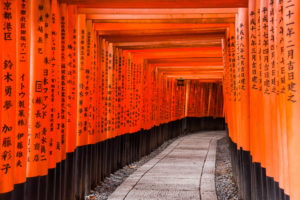
Skip to: 07:48 Sake Bar Jam
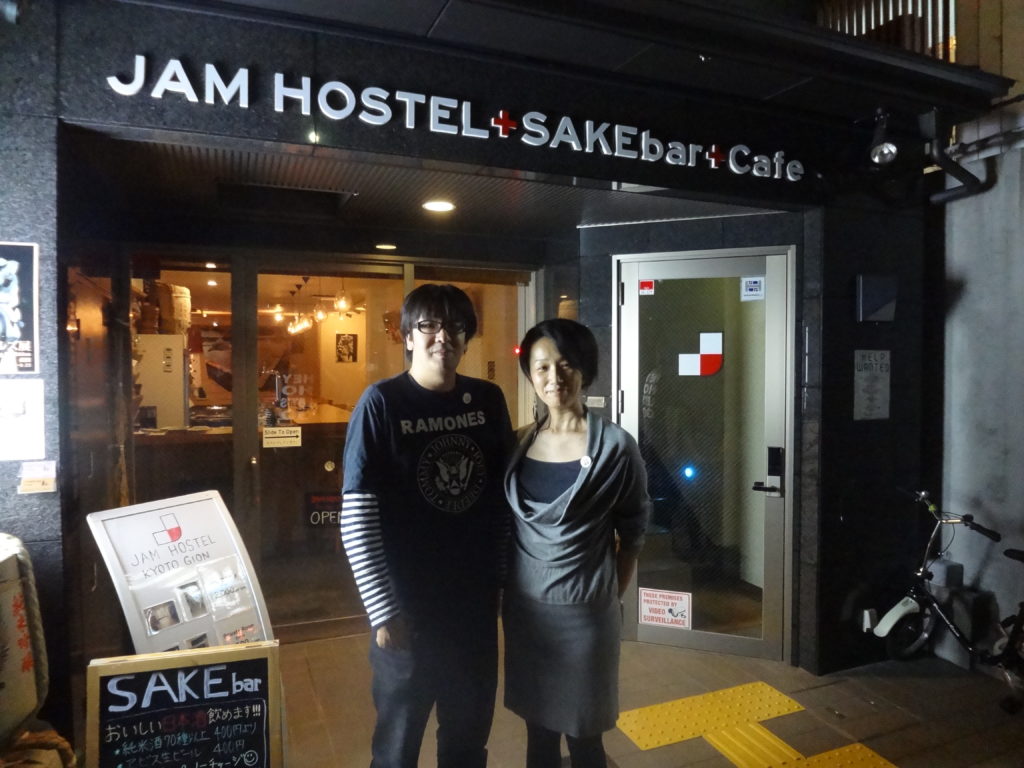
Visit JAM Sake Bar in Kyoto!
Address: 170 Tokiwachō (Yamatoōjidōri). Higashiyama-ku, Kyōto-fu 605-0079. Japan
Google Map: https://g.page/jamsakebar
Jam Sake Bar Twitter: https://twitter.com/kyoto_sakebar
Jam Sake Bar Instagram: https://www.instagram.com/jamsakebar
Jam Sake Bar Facebook: https://www.facebook.com/jamsakebar/
Jam Sake Bar Website: http://www.sakebar.jp/
Skip to: 10:17 Matsuo Taisha
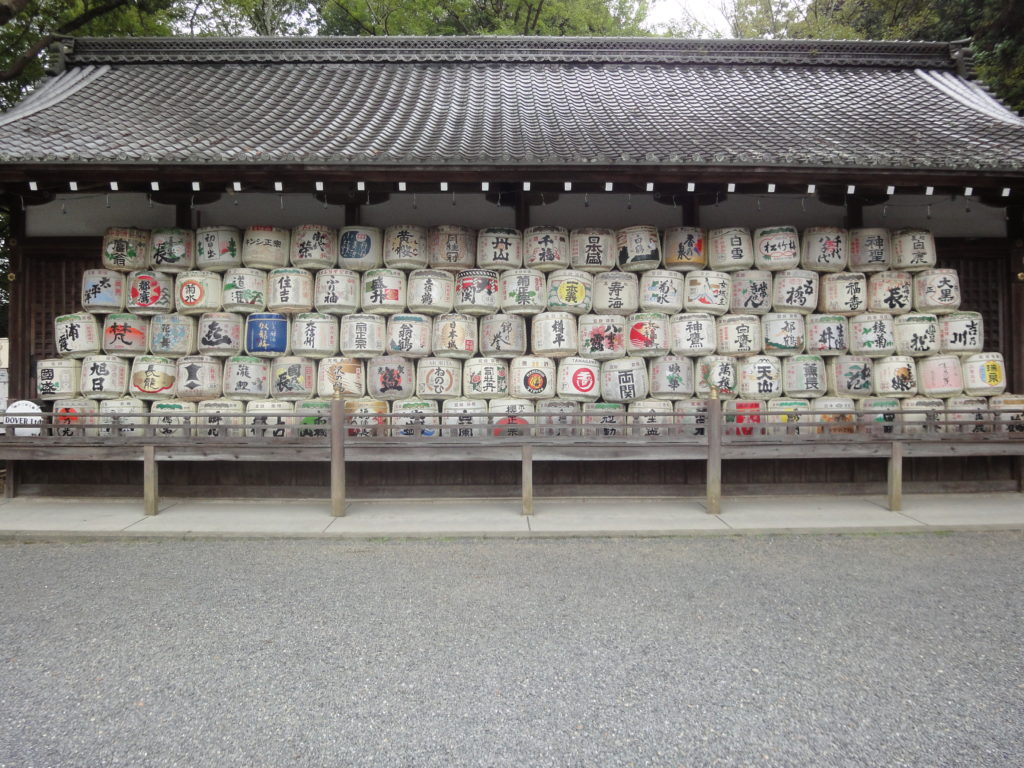
Visit Matsuo Taisha Shrine
Japan, 〒616-0024 Kyoto, Nishikyo Ward, Arashiyama Miyamachi, 3
Google Map Link: https://goo.gl/maps/txEH9Xi6nMdPYY9B8
Website: http://www.matsunoo.or.jp/en/
Skip to: 17:41 Sake Introductions
Skip to: 20:52 Sake Tasting : Tsukinokatsura Yanagi Junmai Ginjo
Tsukinokatsura Yanagi Junmai Ginjo
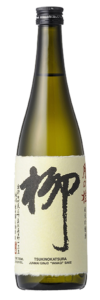
Brewery: Masuda Tokubee Shoten
Classification: Junmai Ginjo
Alcohol: 15.5%
Prefecture: Kyoto
Rice Type: Yamadanishiki
Seimaibuai: 50%
SMV: +2.0
View on UrbanSake.com: Tsukinokatsura Yanagi Junmai Ginjo
Skip to: 23:40 Sake Tasting : Shinsei Junmai Daiginjo
Shinsei Junmai Daiginjo
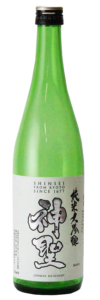
Brewery: Yamamoto Honke
Classification: Junmai Daiginjo
Acidity: 1.3
Alcohol: 15.5%
Prefecture: Kyoto
Seimaibuai: 50%
SMV: -1.0
Rice Type: Kyonokagayaki
Brand: Shinsei (神聖)
Importer: JFC (USA)
View on UrbanSake.com: Shinsei Junmai Daiginjo
Skip to: 30:21 Show Closing
This is it! Join us next time for another episode of Sake Revolution!
Announcing Patreon
 Now there is a new way to support Sake Revolution. Join us on Patreon! Patreon is an online platform that allows you to support your favorite creators by subscribing to a monthly membership. At Sake Revolution, we’re offering two tiers, each with its own perk. If you enjoy our sake podcast, if you are able, please consider supporting this labor of sake love! See below to learn about our Patreon support levels.
Now there is a new way to support Sake Revolution. Join us on Patreon! Patreon is an online platform that allows you to support your favorite creators by subscribing to a monthly membership. At Sake Revolution, we’re offering two tiers, each with its own perk. If you enjoy our sake podcast, if you are able, please consider supporting this labor of sake love! See below to learn about our Patreon support levels.
-
Sake Enthusiast
Have you ever wanted to sip along with us as we taste our sakes on the podcast? Now you can! As a Sake Enthusiast patron, you’ll get the inside track and know in advance which sakes we’ll be featuring on the show. This allows you to get them on hand and sip along with us while you listen.
-
Sake Otaku
As a Sake Otaku supporter of the pod, you’ll get access to all the Sake Enthusiast intel along with access to a monthly live zoom Sake Happy Hour taking place the first Weds of every month at 9pm ET (6pm PT). Visit with us live on zoom! Come with all your questions and suggestions and enjoy a relaxed and fun Happy Hour with with us as we all sip sake together!
Episode 74 Transcript
John Puma: 0:21
Hello, everybody. And welcome to Sake Revolution. If you are looking for America’s first sake Podcast, you are in luck, you found it we’re right here, I am your host, John Puma, you might know me as the guy over at the internet sake discord but around these parts, I am the. non sake samurai. I leave the sake samurai duties to my amazing cohost
Timothy Sullivan: 0:44
I am your cohost Timothy Sullivan. I am a sake samurai, sake educator, as well as the founder of the Urban Sake website. And every week, John and I will be here tasting and also chatting about all things, sake and doing our best to make it fun and easy to understand.
John Puma: 1:02
All right, I understand. where we’re all, um, we’re a little kawaii-ed out after last week. not that I think you can ever truly be tired of cute things, but,
Timothy Sullivan: 1:13
Yeah. Well, I remember back to when the pandemic first started and we were doing these episodes on zoom as we are now, still. One thing we set a lot almost every week. If I remember correctly was that I can’t wait to visit Japan again. And we’re still here waiting to visit Japan again.
John Puma: 1:33
Always waiting. I feel like,
Timothy Sullivan: 1:36
Yeah.
John Puma: 1:37
I feel like it’s going to be a while, you know, just kind of seeing how things are going. even though, you know, vaccines are getting out there and people are able to live more normal lives. Now I do think that it’s going to be a bit of time before. Uh, borders, particularly to that country are going to be open.
Timothy Sullivan: 1:58
Yep. We want everyone to be safe and we want to travel to Japan again when it’s safe to do so. And it’ll be good for everyone. But until that time, it looks like we’re going to have to take another virtual trip to Japan.
John Puma: 2:16
Those are fun. I still like those. Those are yet. Those are the.
Timothy Sullivan: 2:20
And I think besides Tokyo, the most famous city in the whole country has to be a what don’t say Sapporo.
John Puma: 2:29
Yeah, no, no. I I think that most people go to Japan, they do like for their very first trip, they do like the, the Tokyo Kyoto thing. You know, you go to, you go to Tokyo, you spend like a lot of your time there. And then you take the Shinkansen down to, Kyoto do all of the, cultural things. And then. Go back to Tokyo. That seems to be a common thing that I hear a lot from people. It’s also what I did the very first time I ever went to Japan.
Timothy Sullivan: 3:02
I spent my first night in Japan in Kyoto. So right from the Tokyo airport to Kyoto and, uh, it was an amazing introduction. So there’s a few things we know about. Kyoto just common knowledge. It’s a major, major tourist destination. And the reason for that is because it has so much preserved culture. So there are shrines and temples and beautifully preserved parts of the old city and it is just enchanting to visit Kyoto. That’s why it’s become such a tourist hub, but for our purposes, it also has a very rich sake history. Yes.
John Puma: 3:50
When I think of Kyoto even now, the thing I think of is that rich history is that, the fact that they are the, you know, the original capital and the shrines and the, and all that other fun stuff. And I, I forget that there is a lot of sake.
Timothy Sullivan: 4:08
That’s right. Kyoto was the capital of Japan from 7 94 to 1869. That’s a long time. And, uh, when it comes to sake breweries right now, there’s about 43 or 44, sake breweries in Kyoto and yeah. And 21 about half of those are in this area of Kyoto city called Fushimi. And Fushimi yeah, that is the sake neighborhood of Kyoto. And we we’ve talked about these sake neighborhoods before. There’s a really famous one in Hiroshima isn’t there.
John Puma: 4:48
right. Yeah.
Timothy Sullivan: 4:49
That’s right. So saijo is very similar to what you’re going to find in Fushimi. Uh, the sake brewery industry kind of grew up in this neighborhood and it’s south of the area you would go to as a tourist in Kyoto. One of the reasons that this Fushimi area became well-known for sake and many breweries moved there is because of the, the water that is available there the city of Kyoto is kind of in a valley. So there’s mountains on all sides of it. So there’s wonderful water runoff, and, uh, they have great access to water in this Fushimi neighborhood. So that’s one of the reasons that sake kind of grew up in this area?
John Puma: 5:33
Nice. And I’ve always been told, when you’re opening up your sake brewery, you go where the water is. You don’t, uh, don’t go with a rices necessarily. It’s easier to bring the rice to the brewery than it is to bring the water to the brewery, unless you’re Senkin. And then you want the rice within five minutes of transport of some mysterious transport of your brewery. Water is heavy. Water is big. Water is difficult to move. And I guess that explains why there so many breweries in this one valley, they’re all sharing that, that water source.
Timothy Sullivan: 6:05
Yeah. So what, what was your impression of Kyoto when you went there? What did you do? Anything fun? Interesting.
John Puma: 6:13
I don’t know, so this was a very long time ago. It was the very first time I was ever in Japan. I feel like we covered some of this before. Right. Did not have the most ideal trip to Japan. And this Kyoto portion of it is overnight event was just another, uh, example of that, I guess, you know, we went to a lot of shrines and I, after like the third try and I kind of realized that all the shrines kind of look the same and we’re still going and no, and there’s like, no, w there’s an itinerary then we’re just going to all these places and they, and, and just walking a lot and it’s, it was kind of hot and I’m tired. And I, I think I might’ve mentioned in the past, on this trip, I didn’t really eat a lot, so I wasn’t in a really bad mood. The very first time I went to Kyoto Kyoto did not get a fair shake from me.
Timothy Sullivan: 7:06
okay. Did, did Kyoto get a redemption trip from you?
John Puma: 7:11
Kyoto got a sake redemption trip where I was, I was in Kyoto only for one night, but we went. To quite a few really nice, sake izakaya’s and sake bars in the area and found that there’s a really great culture for that in the vicinity, didn’t visit any brewery. But I really did enjoy, uh, getting to sip sake and talk to people. Uh, I always like to find out what the local scene is like when I go someplace and this was, this was a lot of fun and Kyoto is is very, very healthy. And, uh, and we had a great time.
Timothy Sullivan: 7:48
Did you have a particular sake bar you went to that you liked and you want to shout out? yeah, I do actually. I want to shout out and I, I feel like a lot of people are going to. You probably have heard Of this place, um, because it is popular with, foreigners, but it’s called jam hostile of course,
John Puma: 8:08
yeah, it
Timothy Sullivan: 8:08
I was going to shout out Sake Bar Jam.
John Puma: 8:11
All right. So yeah, so it’s a sake bar is very foreigner friendly. It’s a great place to introduce people to sake and upstairs, it’s a hostile and. It’s really interesting. The people there are, very fluent in English. They have a wonderful selection of sake and a great knowledge of it, we brought a friend of ours there who is not familiar with sake and he had a blast.
Timothy Sullivan: 8:33
Yeah. So it’s, it’s owned by a couple. Mr. And Mrs. Ikeda I’ve met them many times. They’re wonderful people very friendly. And they have a wonderful selection of fresh Kyoto local sake, uh, English is spoken there and it’s right on the edge of the Gion district, which is the known as the geisha district or the nightlife district. And it has a wonderful place to visit. So I wanted to shout out the Ikedas and Sake Bar Jam, when we get back to Kyoto, I can’t wait to visit them again.
John Puma: 9:09
Very nice. I also, I also went to a non sake bar. I know this sounds blasphemous and weird, but I have to shout this place out because it was amazing. It was called sour. And when you go into sour, it’s a standing bar and behind the counter is what looks like a supermarket fruit rack. Like it’s lit in the same way as the market for like, it just looks like a supermarket fruit rack and the menu is whatever fruit is on the rack and of blender and shochu and seltzer. And they just make whatever fruit sours out of whatever they’ve got. And it’s a lot of fun and they tend to be pretty tasty.
Timothy Sullivan: 9:55
Wow. That place could be like a smoothie bar during the day
John Puma: 9:58
Absolutely. I actually think somebody like that would actually fly here. I think that would be a fun thing to do. You know, they can probably go with a whole, like, you know, oh, you’re getting this like nutritious fruit with your, you know, with your cocktail.
Timothy Sullivan: 10:13
Love it.
John Puma: 10:15
I place was a lot of fun.
Timothy Sullivan: 10:17
Yeah. I’ve had many trips to Kyoto and I always have a wonderful, wonderful time. Kyoto is known for many things. We mentioned the sake culture there. It’s also really famous for green tea, uh, and it’s famous for, refinement culture. You see a lot of people wearing Kimono when you’re walking around and very refined high-end kaiseki restaurants. This. You mentioned visiting all the different shrines and I have a hot tip for any sake lovers going to Kyoto. There is a shrine off the beaten path that is very important for the sake industry. It’s called Matsuo Teisha Matsuo Teisha, and it was built in 7 0 1, a D and it is a shrine Shinto shrine to the God of sake. Now when people think of shrines in Kyoto the most, most famous one is Fushimi Inari Taisha, which is the one with all those red, that the, uh, Vermilion gates that go one after the other, if you’ve ever, if you’ve ever seen memoirs of a geisha and the little girls running through the gate, That’s what we’re talking about, and that is in the Fushimi neighborhoods. So that is south of the city. And that’s what a lot of people think of when they think of the Shinto, shrines and Kyoto, but the Matsuo Taisha shrine is really off the beaten path. I kind of had, I had to take a taxi to get there, and it’s relatively small compared to other complexes you can find in the city, but it is the. Spiritual home of the God of sake. And along one side of the main square is a display rack of barrels of sake that had been donated by brewers from all across the country as an offering to the God of sake. So if you’re ever in Kyoto, sake adventure off the beaten path. You can go pay your respects to Matsuo Teisha and, it is a wonderful place to visit. And it’s usually not crowded with tourists at all. So it’s a great place to visit and for, I think for 100 yen and about $1, they have a private garden in the back that you pay an entrance fee and you can walk around this beautifully manicured garden in the back. So that’s my hot tip for. Doing something sake related in Kyoto
John Puma: 12:45
Nice. Can you, can you drink any sake with the God of sake?
Timothy Sullivan: 12:50
BYO.
John Puma: 12:52
Y yeah. Okay. That’s a, one sake, it gets more popular. That shrine is going to pick up businesses, going to pick up. People are going to be waiting to go over there, hanging out with the God of Sake.
Timothy Sullivan: 13:05
Yeah. it’s not just this like very special Shinto shrine for the God of sake. There’s some other things that have happened in Kyoto that are really important for the sake industry. And there’s many famous sake breweries
John Puma: 13:20
Hm. Now, now. I’ve heard, you know, a little bird told me that this is also where they do the sake samurai, ceremony. I don’t know where I might’ve heard. I pick that up.
Timothy Sullivan: 13:32
Yes. So the, every, when they do it in person, every October, they have the sake samurai induction ceremony in Kyoto as well, you get to experience all this sake history when you visit Kyoto.
John Puma: 13:51
Nice.
Timothy Sullivan: 13:52
Yeah, there.
John Puma: 13:52
like sake. I like history. So that sounds, it sounds like there’s a whole, experience that I’ve never had in Kyoto. And I need to go back.
Timothy Sullivan: 14:03
Definitely. And I was surprised I was reading a little bit of more modern history, like the 20th century history of sake and some pretty famous things happened in Kyoto. As the sake industry was evolving over the 20th century. Now you may have heard of this brand before Gekkeikan. It’s pretty famous. It is a very, very large brewery founded in 1637. And I read that they were one of the first breweries to Institute year-round sake production in the early 20th century. So when refrigeration was introduced, they didn’t have to brew with the seasons anymore. So Gekkeikan was one of the first breweries to Institute year-round brewing, which was very radical at the time. They also have. Uh, really, interesting museum at Gekkeikan it is called Okura sake museum. And if you’re looking for an approachable, easy to understand and very accessible sake history museum, it is absolutely a must do so that’s something that’s very easy to find and easy to navigate and a great introduction to sake history.
John Puma: 15:14
So, so Tim, what else do you know that that’s the museum sounds really nice. Uh, I’ve never actually been to a sake museum before. So kind of that, that goes on the bucket list. I think, what else does Kyoto have to offer the sake lover in all of us?
Timothy Sullivan: 15:30
well, there’s another really interesting. sake history tidbit that happened in the post-war period in 1964, there was a brewery Masuda Tokubee Shoten, which they make a very famous brand called Tsukinokatsura and I talked about them in our Koshu or our aged sake episode. I mentioned that this brewery had this vault of a decades old
John Puma: 15:57
The oldest Koshu.
Timothy Sullivan: 15:59
We think, and they’re also not only famous for their Koshu, but they lobbied in the mid sixties, they lobbied to make nigori legal again. So nigori was
John Puma: 16:15
Timeout. Wait again, wait a. minute. Somebody’s outlawed ni gory at some point.
Timothy Sullivan: 16:22
Yes. Well, originally all sake was cloudy. There was no filtering. Then when kind of pressing and filtering came along, the government started to tax the sake. When it got pressed or filtered, they didn’t want anyone skipping the pressing filtering step. So sake was required by law to go through this pressing filtering step. But. Some breweries, like Tsukinokatsura wanted to make a cloudy style sake, coarsely filtered, you know, not doburoku, not completely unfiltered, but they wanted a little bit of sake rice leftover in their, in their sake. And they lobbied for nigori sake to be, uh, an allowable style to make once again. So that happened in 1964. So they’re kind of seen as the modern. Instigators of commercially available, nigori sake. So that happened in the mid sixties and as fate would have it, I actually brought a sake today to taste from tsukinokatsura brand as my, my representative of Kyoto sake. I know we each brought a different sake from Kyoto today.
John Puma: 17:33
we did now, now this is not a nigori.
Timothy Sullivan: 17:36
no, it’s
John Puma: 17:37
Not in, not. the, the nigori they brought back.
Timothy Sullivan: 17:41
After all that buildup. Yeah, no, it’s uh, they have, they have lovely nigori. They also have sparkling nigori, but I brought a Junmai Ginjo Tsukinokatsura Yanagi means Willow, like the tree Willow this brewery again is Masuda Tokubee Shoten founded in 1675. I don’t know if it’s just me, John, but the brewery seemed to be getting older and older and older here.
John Puma: 18:09
I’m noticing that Kyoto has a propensity towards older breweries.
Timothy Sullivan: 18:14
Yes. So the current president is Mr. Masuda and he’s the 14th generation of the family. To make sake at this location. So it’s a very historic, very beautiful brewery. The Yanagi or the Willow Junmai. Is a 15.5% alcohol it’s made using two rices Yamada Nishiki and Ume-nishiki, those are polished down to 50% remaining. We have an SMV, uh, that’s a sake meter value, how sweet or dry that’s a plus two, which is pretty neutral there. And then we have a very balanced acidity of 1.5. All right. So I’m super curious. Drum roll, please. What Kyoto sake did you bring to taste?
John Puma: 19:00
Well, I am glad, you know, So mine is, uh, from a brewery cold, uh, Yamamoto Honke, which, uh, stop me if you’ve heard this century before was established in 1677.
Timothy Sullivan: 19:18
Do you think all these founders have all these breweries like hung out together and.
John Puma: 19:22
It wouldn’t shock me if they were like, oh yeah. Yeah, like, uh, getting peas, making, uh, making a brewery, ah, let’s try this stuff. Oh, I can do better than that. And then they go and try to make a brewery and then they just kind of it’s snowballs. I could definitely see that being something that happened. Um, but no, this, the name of the brand is Shinsei, and this is there junmai Daiginjo. Um, I do not have the rice type, but the alcohol percentage is, 15% the rice was milled to 50% of its original size and the sake meter value that measure of dry to sweet is negative one. So it should be a touch. Sweet. We’ll see how it goes. Uh, I think acidity is at 1.3. They’re not, not terribly high, but not very low either.
Timothy Sullivan: 20:14
Yeah. You know what strikes. Reading through both of our stats on these sakes, there’s a lot of overlap. The milling rate, alcohol percentage, the acidity and SMV are not that far apart. Uh, we don’t know what your rice is, but you know, there’s a good chance. It might be, yamadanishiki as a Junmai daiginjo.
John Puma: 20:33
striking suspicion that its Yamadanishiki.
Timothy Sullivan: 20:36
Yeah. So it’ll be interesting to see if there’s overlap in our flavor profiles as well.
John Puma: 20:43
great. Uh, so why don’t you grab your bottle,
Timothy Sullivan: 20:47
All
John Puma: 20:47
open it up and let’s, uh,
Timothy Sullivan: 20:52
So let me open. Yep. Let me open this up. All right, looks nice and clear. Um, okay. The aroma is very luscious and fruit. It smells melon-y and a little bit banana-y so very fruity, very much a fruit salad, aroma. it smells very pretty and almost floral as well.
John Puma: 21:36
That sounds right up my alley.
Timothy Sullivan: 21:38
Yeah. But it’s not from Yamagata. This is a Kyoto special. All right. Well, let’s give it a taste. it tastes good.
John Puma: 21:51
Slap that one on the bottle right there. It tastes good, Timothy Sullivan, sakes MRI.
Timothy Sullivan: 21:58
No, my most sophisticated review ever. The flavor is very fruity and I’m getting on the palate. That tastes is a little bit more towards cherry and, uh, some kind of deeper fruit flavors. The aroma was a little bit fresher and more tropical. The flavor on the palate is like a little bit of cherry and a little bit richer. Um, very silky smooth. And it’s not light and quiet. It’s a little bit richer and has a bit of weight to it. Still very silky, but rich coating on the palate, a medium finish and really enjoyable, just a very fresh, delicious, easy drinking. And I would love to have this. Celebration or something like that.
John Puma: 23:03
that. sounds quite good. It sounds right up my alley. Um, Jealous that we’re not drinking the same thing today. That does sound wonderful.
Timothy Sullivan: 23:12
and the, the aroma is not shy either.
John Puma: 23:16
Mm.
Timothy Sullivan: 23:16
Sometimes you really have to stick your nose into the glass. Give it a really good swirl to get the aroma up and out there, but this is overflowing the glass. The aromatics are strong, engaging, and really lovely, so very easy to enjoy smooth and very delicious.
John Puma: 23:38
Nice.
Timothy Sullivan: 23:40
All right. I am excited to see what you have to say about your Shinsei,
John Puma: 23:45
I’m also very excited to see what I have to Say, about, Shinsei, never tasted this before before a special treat.
Timothy Sullivan: 23:52
we’re going to get your hot take.
John Puma: 23:53
My hot take. Hopefully I will think it is good. Yeah. All right, the Roman’s got a nice combination of fruit and rice. It’s a little bit, so it’s definitely got like a rice-y, component to the nose. I guess you, you like to talk about that stat, that steamed a bowl of rice aroma.
Timothy Sullivan: 24:25
Yes, I do. I do talk about that a lot. Yeah.
John Puma: 24:28
with, along with fruit, uh it’s it’s very
Timothy Sullivan: 24:30
Hmm.
John Puma: 24:33
And then. Taste is unique. This is different in a good way. This is a different, in a good way. There is some nice, like a nice fruity foundation to it. The rice is still present and it gives us a way to a bit of a richness, a bit of a depth. It’s interesting because I’m getting a lot of the things that are coming to my mind are not that dissimilar to what you described with your sake. so many, I I’d say like maybe a little more rice for where on my end here, but a lot of the other components here that, that depth and richness with fruit is present in this. There’s also a light acidity throughout that just kind of plays in the background. Very tasty. Very, very nice. And if you want to have a little bit more of rice presence in your. Fruity sake.
Timothy Sullivan: 25:35
Yeah.
John Puma: 25:36
Like this is probably something you should get your hands on because it’s doing that in a way that I’m not, tasted too many. sake’s that? Do this? Yeah.
Timothy Sullivan: 25:44
yeah, it’s nice. When, when sakes can integrate that rice flavor or maybe that umami flavor with something reminiscent of fruits and kind of create a balance there that’s a high wire balancing act.
John Puma: 26:04
Yeah. I think that this could easily have gone. I think a little bit, a little bit too much. rice would have maybe gone a different direction for the. Uh, but no, they did, uh, they nailed it.
Timothy Sullivan: 26:17
Yeah. And I think that rice flavor you’re talking about is not what people expect when they purchase a Junmai daiginjo. They’re
John Puma: 26:26
it’s not.
Timothy Sullivan: 26:27
yeah, usually much more of the profile that I described for my sake. You know, very fruity, usually sometimes rich and something you’d want to drink in a wine glass.
John Puma: 26:39
Yeah. I, I think you’re absolutely right. I it’s just taking that in a slightly different direction. That classic Daiginjo idea.
Timothy Sullivan: 26:46
Well, I do have to remind you that my brewery opened in 1675 does have two years more brewing experience than your brewery opened in 1677. So that might explain a little bit.
John Puma: 27:01
possible that the founder of this brewery went two years and was like, this needs more rice say, I like what you guys are doing, but I feel like, I feel like I want to taste the rice a little bit. more. You know what? I’m going to go do it myself. Two years later. Boom, Yamamoto, Honke. Uh, I don’t, I don’t guys, I don’t really think that’s how the brewery started, but our, our fantasy Kyoto brewery origin stories are kind of interesting though.
Timothy Sullivan: 27:39
Um, yeah, so as mine is warming up, it’s getting even more fragrant, the aromas becoming even more perfumed and more rich. So it’s really something you can sink your teeth into and just enjoy it’s has a very luxurious kind of vibe to it.
John Puma: 27:58
I suspect that as mine warms up, the rice will be more prominent. I also think that the, that richness is going to rise up. I think that the fruit and the sweetness. Be a little subverted, so I will have this chilled cause I, I think I like it exactly where it is. Isn’t that perfect little, uh, Goldilocks spot for me.
Timothy Sullivan: 28:20
Yeah, that sounds great.
John Puma: 28:21
And I’m going to take for me because you know, some people might taste this and be like, you know what? I want to explore those other flavors and they’d be able to bring it up to room temperature and really.
Timothy Sullivan: 28:32
Yeah. Well, it sounds like we’ve discovered two great sakes from Kyoto. We learned a little bit about. The Kyoto history. And I do want to remind people that Kyoto is not just Kyoto city. It is a whole prefecture and about half the breweries are outside of this Fushimi area. So if you do get to Kyoto and you have some time, it’s really worthwhile to go a little bit further a field and explore some of the breweries and towns that are outside of Kyoto city center.
John Puma: 29:08
well, I don’t know if I’m going to do that necessarily the next time. And Kyoto. Some make-up time I need to do in, uh, in the city itself and the city proper. But once I get through it, all of that, uh, I will get a little bit further a field and visit some of these other breweries.
Timothy Sullivan: 29:25
Yes. And I will meet you at sake bar jam for a drink.
John Puma: 29:30
excellent.
Timothy Sullivan: 29:31
Well now I can’t wait to get back to Kyoto. This was a fun,
John Puma: 29:38
these episodes are killing us Tim. Every time we do one of these, like,
Timothy Sullivan: 29:44
I know. Heavy sigh.
John Puma: 29:49
Yeah. that was definitely my heavy sigh, but, uh, it is really nice too. To have these conversations to, to learn more about these places that, uh, honestly, I probably didn’t appreciate enough when I was previously visiting. So this
Timothy Sullivan: 30:04
Yeah.
John Puma: 30:05
me, uh, and hopefully help our listeners to get the most out of Kyoto next time they were there.
Timothy Sullivan: 30:10
Yeah. And it is never too early to start planning your next trip to Kyoto that’s for sure.
John Puma: 30:18
Absolutely. Absolutely.
Timothy Sullivan: 30:21
All right. Well, this was a lot of fun. I am so homesick for Kyoto, but we are going to stay positive and look forward to our next trip, John. It was great to taste with you. Thanks for taking the time. And I really hope that our listeners are enjoying our show as well. If you’d like to show your support for sake revolution, one great way you can help us out right now is to back us on Patreon. We are a listener supported show and we appreciate each and every one of you who take the time to back us on Patreon and help us bring Sake Revolution to you free of advertisements.
John Puma: 31:00
Right. The site for that. And just going to be patreon.com/SakeRevolution, and you can go there and join one of our tiers. We have a few, and we really do appreciate your support, and people who don’t do that, we also appreciate your support by listening. We appreciate that you take the time to listen to our show. We really appreciate when you guys do, reviews on your podcast platforms, they really do. Get the word out about the show and we do really appreciate that. And one of the thing though, um, make sure you tell your friends too, because while getting the reviews out there and supporting us on Patreon, these are all really nice things that help us out. Directly telling a friend, huge, huge boost every time
Timothy Sullivan: 31:41
And family.
John Puma: 31:42
And family pets, whomever,
Timothy Sullivan: 31:46
And as always, if you would like to learn more about any of the topics sakes or prefectures we talked about in today’s episode, be sure to visit our website, SakeRevolution.com for all the detailed show notes.
John Puma: 32:01
and for all of your sake question needs. We have an email address, [email protected]. You want to send the emails there and we will read them and then we will react to them in one way or another. so yes, until next time, please raise a glass, please remember to keep drinking sake and Kanpai
Timothy Sullivan: 32:24
Kanpai.